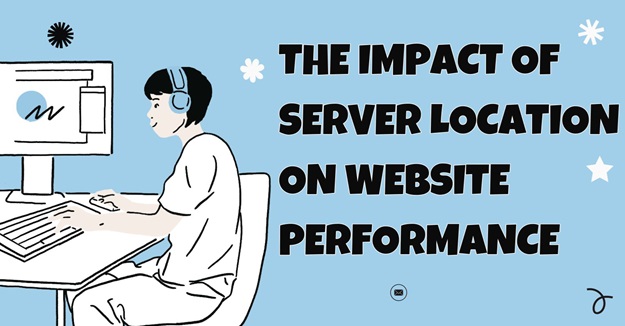The digital landscape is becoming increasingly competitive day by day, and the performance of a website plays a crucial role in its success. One factor that has a profound impact on this performance is the location of the web hosting server. This article delves into how the geographical placement of your web hosting server affects your website’s performance and search engine optimization (SEO).
Decoding the Concept of Web Hosting Location
Web hosting location refers to the geographical placement of the data center where your website’s data and files are stored. The distance between this server and the users who visit your website can greatly influence its performance, including its speed and responsiveness.
Moreover, the server location also plays a substantial role in the dynamics of SEO. The proximity of the server to the users directly impacts the latency, which is the delay time in the server’s response to a user’s request. A server that is closer to the user reduces latency, leading to faster page load speed and a more fulfilling user experience.
The Impact of Server Location on Website Performance
Latency and User Experience
The most direct impact of server location on website performance is through latency. Latency refers to the delay between a user’s request for data and the server’s response. It is primarily determined by the physical distance between the user and the hosting server – the farther the server, the higher the latency, and vice versa.
Higher latency leads to slower loading times, which can adversely affect user engagement and retention. On the other hand, lower latency, achieved through closer server proximity, results in faster data transmission, quicker loading times, and a more positive user experience.
Server Response Time
The time taken by the server to respond to a user’s request, known as server response time, is also influenced by the server’s location. Servers that are closer to the user can process and send back the requested data faster, leading to quicker response times. This results in smoother navigation for the user, improving overall user experience.
Bandwidth and Data Transfer
The capacity of a server to handle data transfer, known as its bandwidth, can be influenced by its location. Servers located far away from the user may have limited bandwidth, which can lead to slower loading times, particularly during periods of high website traffic.
Conversely, servers located closer to the user or the bulk of the user base tend to have higher bandwidth, allowing them to accommodate multiple simultaneous requests more efficiently. This results in faster loading times, even during peak traffic periods.
Server Location and SEO
The location of your web hosting server can also significantly impact your website’s SEO.
Influence on Page Load Speed
Page load speed is a critical factor for SEO. Search engines like Google consider page load speed as a ranking factor and tend to rank faster-loading websites higher in search results.
The Importance of Customer Support in Web Hosting
As discussed earlier, server location can influence page load speed through latency and server response time. Therefore, choosing a server location close to your target audience can help boost your website’s page load speed, enhancing its SEO.
Geotargeting and Local SEO
Server location can also influence geotargeting, which is the practice of delivering content tailored to users based on their geographical location. Websites hosted on servers located in specific regions are likely to rank higher in local search results for that area.
For local businesses targeting a specific market, hosting their website on servers located in that region can improve their visibility and relevance to local users, thereby boosting their local SEO.
The Role of Content Delivery Networks (CDNs)
Content Delivery Networks (CDNs) can help mitigate the effects of hosting location on website performance and SEO. CDNs distribute website content across multiple servers located in different geographic regions.
By serving content from servers closer to the user, CDNs can reduce latency and enhance website performance, leading to faster page load speeds and improved SEO rankings.
Impact on Data Privacy and Compliance
The location of the hosting server can also affect data privacy and compliance with regional regulations. For instance, the European Union’s General Data Protection Regulation (GDPR) requires businesses to protect user data and privacy. Hosting data on servers located within regions that have specific regulations ensures compliance and protects user privacy.
Global Reach and Accessibility
For websites targeting a global audience, choosing server locations strategically in key regions can enhance accessibility and performance for users worldwide. Hosting providers with server locations across multiple continents enable businesses to reach diverse markets more effectively.
Choosing the Ideal Server Location
Selecting the right location for your hosting server is a critical decision that can significantly influence your website’s performance and SEO. Here are some tips to help you make the right choice:
- Identify Your Target Audience: Understand where your primary audience resides and choose a server location in that region.
- Use Content Delivery Networks (CDNs): If your website caters to a global audience, consider using a CDN to distribute your content across multiple server locations worldwide.
- Check Data Center Quality: Opt for reputable data centers with robust infrastructure and excellent connectivity.
- Perform Server Response Time Tests: Use tools like Pingdom or GTmetrix to test server response times from different regions.
- Consider Scalability and Redundancy: Choose a hosting provider that offers scalable solutions and redundancy options to handle increased traffic or sudden spikes in demand.
Conclusion
The location of your web hosting server plays a pivotal role in determining your website’s performance and its SEO rankings. By understanding this relationship and making informed decisions about server location, you can optimize your website’s speed, improve user experience, and boost your SEO rankings.
Remember, in the digital world, even a millisecond improvement in your website’s performance can significantly enhance user experience and return on investment (ROI).

